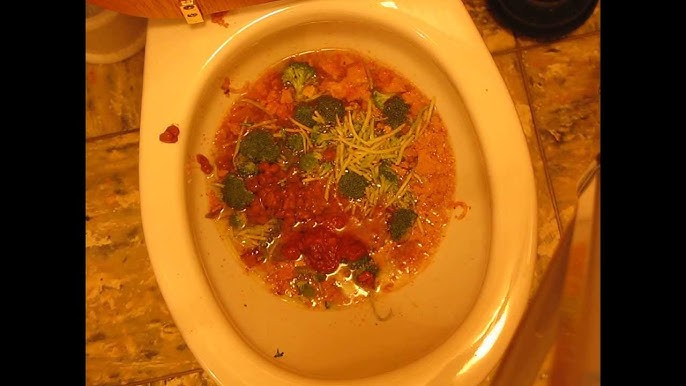Can One to Flush Food Down the Toilet?
Book An Estimate NowThe publisher is making several great points related to Is it safe to flush food (especially rice) down the toilet? overall in this content down the page.

Intro
Many people are often confronted with the dilemma of what to do with food waste, especially when it involves leftovers or scraps. One typical concern that occurs is whether it's fine to flush food down the commode. In this write-up, we'll explore the reasons why individuals may consider purging food, the consequences of doing so, and alternative techniques for correct disposal.
Reasons why individuals might think about purging food
Absence of recognition
Some individuals might not recognize the prospective damage triggered by purging food down the commode. They may erroneously think that it's a safe technique.
Benefit
Flushing food down the toilet may look like a fast and very easy solution to getting rid of unwanted scraps, particularly when there's no nearby garbage can offered.
Negligence
In some cases, individuals might just pick to flush food out of sheer idleness, without taking into consideration the repercussions of their actions.
Effects of flushing food down the bathroom
Ecological influence
Food waste that ends up in waterways can add to contamination and injury aquatic environments. Additionally, the water utilized to flush food can stress water sources.
Pipes concerns
Purging food can result in clogged up pipes and drains pipes, creating pricey pipes repairs and troubles.
Sorts of food that must not be purged
Fibrous foods
Foods with fibrous appearances such as celery or corn husks can get entangled in pipes and create blockages.
Starchy foods
Starchy foods like pasta and rice can absorb water and swell, leading to clogs in pipes.
Oils and fats
Greasy foods like bacon or food preparation oils ought to never ever be purged down the commode as they can solidify and trigger blockages.
Appropriate disposal methods for food waste
Utilizing a waste disposal unit
For homes geared up with waste disposal unit, food scraps can be ground up and purged with the pipes system. Nonetheless, not all foods appropriate for disposal in this way.
Recycling
Particular food product packaging products can be reused, decreasing waste and lessening ecological impact.
Composting
Composting is an eco-friendly way to take care of food waste. Organic materials can be composted and used to improve soil for horticulture.
The importance of appropriate waste administration
Decreasing ecological damage
Appropriate waste monitoring techniques, such as composting and recycling, aid reduce air pollution and protect natural resources for future generations.
Safeguarding pipes systems
By avoiding the method of flushing food down the bathroom, house owners can protect against expensive pipes repair work and preserve the honesty of their pipes systems.
Verdict
To conclude, while it might be tempting to purge food down the toilet for comfort, it is essential to understand the prospective repercussions of this action. By embracing correct waste monitoring techniques and dealing with food waste properly, people can add to much healthier plumbing systems and a cleaner setting for all.
FLUSH FOOD DOWN THE TOILET?
FLUSHING FOOD CAN CAUSE BLOCKED DRAINS IN YOUR HOME
All of the plumbing fixtures in your home are connected to the same sewer pipe outside of your home. This outdoor sewer pipe is responsible for transporting all the wastewater from your home to the Council sewer mains. Even small pieces of food that go down the kitchen sink can cause problems for your sewer. It should therefore be obvious that flushing larger bits of food, such as meat, risks a clog in either the toilet itself or the sewer pipes. Flushing greasy food is even more problematic because oil coagulates when it cools, coating the interior lining of your pipes.
THE TOILET IS NOT A BIN
Food isn’t the only thing that people shouldn’t be flushing down the toilet. People use the toilet to dispose of all kinds of things such as tampons, makeup wipes, dental floss, kitty litter and even underwear. Water goes to great lengths to educate residents about the high costs and stress placed on wastewater treatment systems simply from people flushing the wrong stuff down the toilet. It costs taxpayers millions of dollars each year, and homeowners thousands in blocked drain repairs.
FLUSHING FOOD IS A WASTE OF WATER
Flushing food is a waste of our most precious resource - water. In June this year Level 1 water restrictions were introduced to protect water supply from drought conditions. Much of New South Wales continues to be affected by prolonged drought with recent figures revealing up to 97 per cent of the state remains in drought. Depending on whether you have a single or dual flush toilet, every single flush uses between five and 11 litres of water. In the current climate this is a huge amount of water to be wasting on flushing food that should be placed in the bin (or better yet, the compost).
https://www.jabplumbingsolutions.com.au/blog/can-you-flush-food-down-the-toilet

As a fervent person who reads on Is it safe to flush food (especially rice) down the toilet?, I imagined sharing that blog post was smart. Do you know about another individual who is fascinated with the topic? Feel free to share it. We thank you for your readership.
Call Today